North Korea recently made threats about a possible nuclear war, claiming that they have successfully built an intercontinental ballistic missile. In response to this announcement, Donald Trump has warned Kim Jong Un that the United States military is ready to retaliate if needed. Although media statements from North Korea revealed Kim Jong Un’s plan to fire missiles 25 miles off of Guam—a harbor to two U.S. military bases—he soon retracted his statement. While this is considered current news, history proves this conflict is nothing new.
History of North Korea and Nuclear Weapons
- In 1985, North Korea signed the Nuclear Non-Proliferation Treaty. This international treaty was opened for signature in 1968 and entered into force in 1970. The NPT’s objective is to promote peaceful use of nuclear energy, prevent the spread of nuclear weapons and technology, and further the goal of achieving nuclear disarmament. Every five years the treaty is reviewed.
- North Korea threatened to pull out of the NPT in 1993. However, no action was taken. A year later, North Korea and the United States signed an agreement in which North Korea agreed to cease and dismantle their old reactors in order to receive international aid to build new light-water nuclear reactors.
- President George W. Bush named North Korea, Iran, and Iraq the “axis of evil” in 2002. Bush claimed North Korea admitted to violating their 1994 agreement. In turn, North Korea pulled out of the NPT in 2003 and declared they had nuclear weapons.
- North Korea temporarily disabled their nuclear program in 2005, in exchange for economic assistance and energy resources. Nevertheless, North Korea test fired long range missiles in 2006, asserting their success.
- By 2007, North Korea agreed to dissolve its main nuclear reactor by the end of the year in exchange for $400 million. Six months later they destroyed their water cooling tower, a main source for their reactor and weapon building, but in 2009 it was reported they conducted a second nuclear test.
- North Korea agreed to temporarily disable long-range missile launches and nuclear activity in 2012 in exchange for food aid.
- A third nuclear test was conducted by North Korea in 2013.
- In late 2015, North Korea claimed they created a hydrogen bomb and in 2016 stated they successfully tested this bomb.
Research the history of North Korea and nuclear weapons in HeinOnline to see the extensive documents on this subject. From the Full Text tab on the HeinOnline homepage, enter “North Korea” AND nuclear AND weapon* into the search box.

Narrow down the search results using the facets on the left side of the page. Select U.S. Congressional Documents from the Collection/Library list. Included in the results are CRS Reports.

Locating the Nuclear Non-Proliferation Treaty
To find the Nuclear Non-Proliferation Treaty in HeinOnline, click the U.S. Treaty Index option in the U.S. Treaties and Agreements Library. Locate the Treaty Description option from the drop-down menu and type “Nuclear Non-Proliferation” into the search box. Enter 1968 into the date range and click the search button.
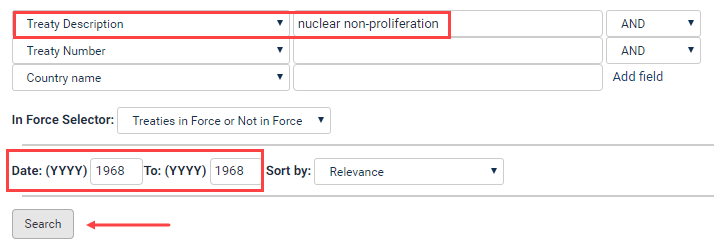
Search results display the United States Treaty citation, as well as the TIAS number. Click the Summary link to view a description of this treaty, or click on the treaty’s citation to access the full text of the treaty.

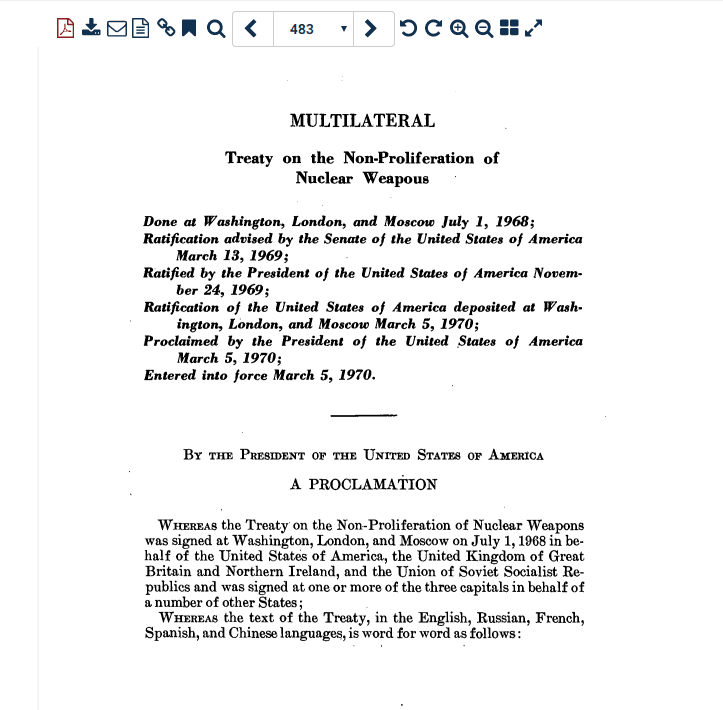
Locate more content in the Law Journal Library. Enter “North Korea” AND (“nuclear weapon” OR “nuclear weapons”) under the the Full Text tab and click the search button. Sort by Volume Date (Oldest First) at the top of the result list to see the first time this was mentioned in journals.
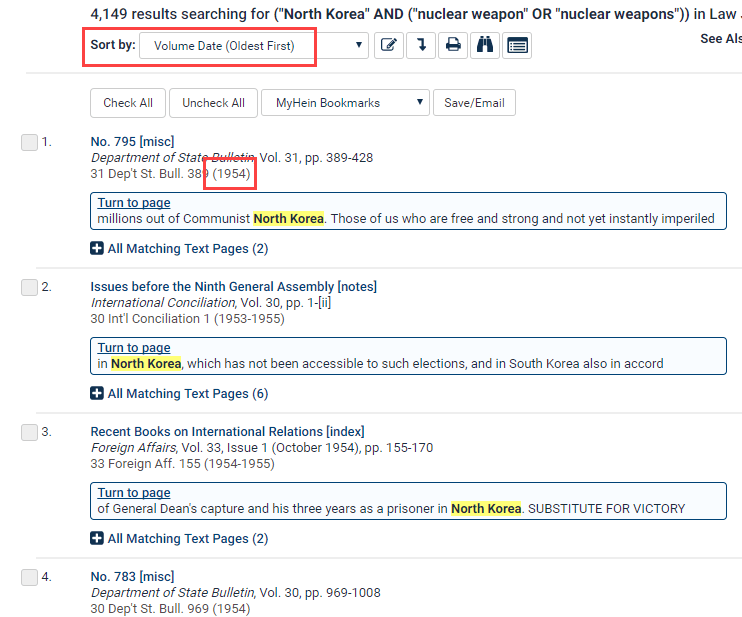
New to the Law Journal Library is the More Like This (Beta) tool, found in the image toolbar. This tool locates “interesting words” in an article determined by an algorithm that analyzes the article’s text.
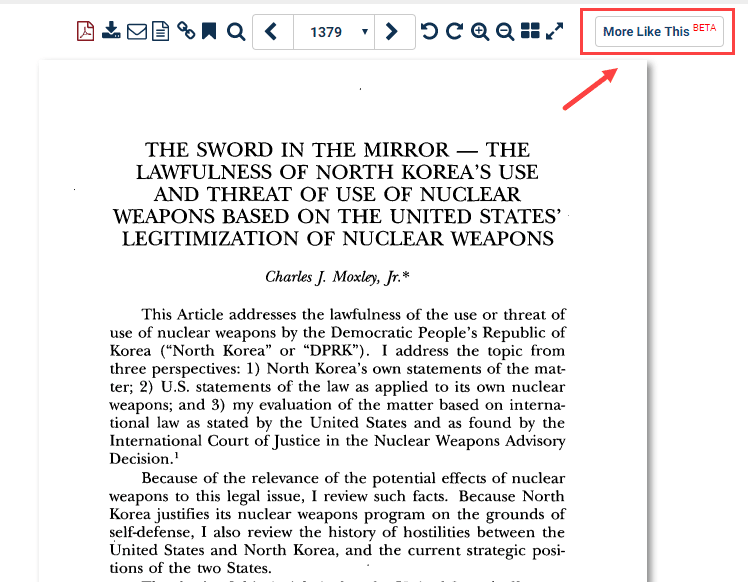
Use this tool to adjust the boost factor on certain interesting words. Users can also add a new term if needed. Results will show similar articles based on the boost factors of the interesting words.
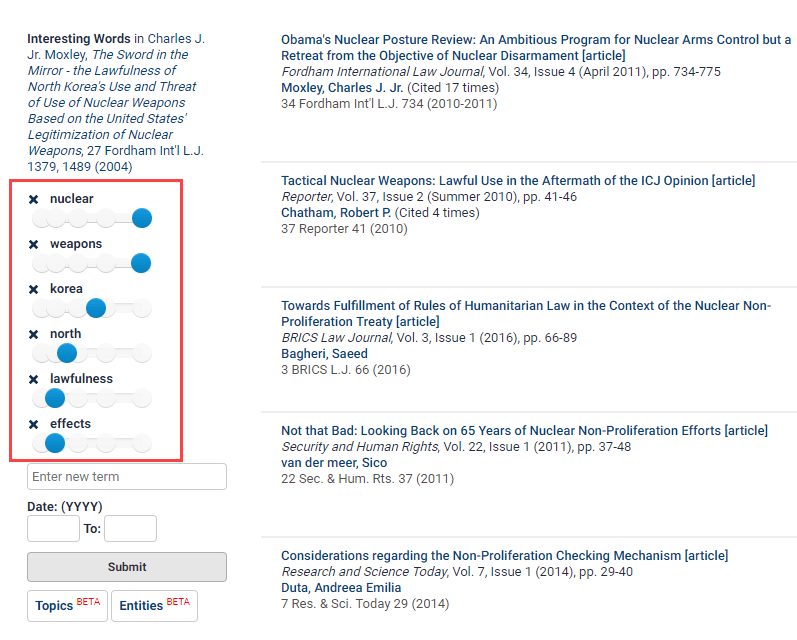
NEW: Look for documents on a specific subject using a new catalog feature in HeinOnline. The Subjects tool can be found under the Catalog tab in any database. View of the number of titles in HeinOnline pertaining to each subject or browse the subjects using the A-Z index. Selecting ALL and browsing by count will display the most popular subject listings. Click on a subject to view available titles, or enter a subject in the subject search bar to find relevant material. For example, enter “nuclear nonproliferation” to access titles pertaining to this topic.

Stay tuned for an upcoming blog further explaining this new enhancement. For help researching this or any topic, or navigating in HeinOnline, contact our dedicated support team at (800) 277-6995, email us, or chat with us!



